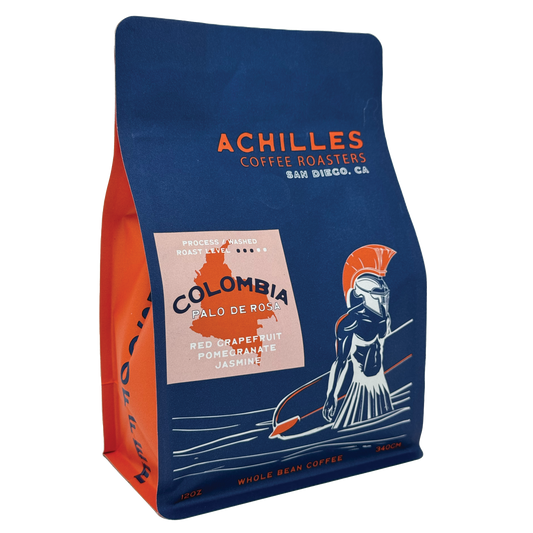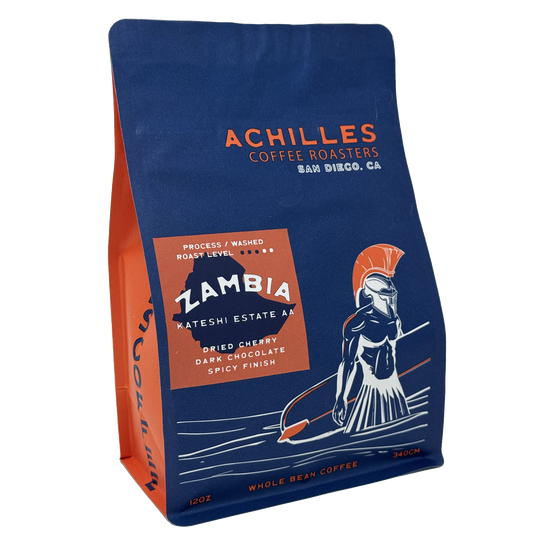As coffee culture evolves, so do the options for milk and milk alternatives. Whether you're lactose intolerant, vegan, or simply exploring new flavors, dairy-free milk alternatives have become a popular choice in coffee shops worldwide.
But how do these alternatives impact the texture, taste, and overall experience of your favorite coffee drinks? In this article, we dive deep into the most popular dairy-free options, their unique properties, and tips for brewing with them at home or in your café.
Why Choose Dairy-Free Milk Alternatives?
Increasingly, people are turning to dairy-free milk alternatives for a variety of important reasons. For many, lactose intolerance or dairy allergies make traditional cow’s milk difficult or impossible to consume comfortably. Others embrace vegan or plant-based lifestyles, avoiding animal products for ethical or health reasons. Environmental concerns also play a big role, as dairy farming is associated with higher greenhouse gas emissions, water usage, and land requirements compared to many plant-based options. Additionally, many consumers are simply interested in exploring new and interesting flavors, textures, and nutritional profiles that dairy-free milks offer, expanding their culinary possibilities and personal preferences. This growing demand has encouraged a wide range of delicious and nutritious dairy-free milk alternatives to become widely available.
Popular Dairy-Free Milk Alternatives for Coffee
Each dairy-free milk alternative brings unique characteristics that affect your coffee’s texture, frothiness, flavor, and overall mouthfeel. Understanding these differences can help you choose the best option for your preferred brew and taste.
Oat Milk
Texture: Creamy, smooth, and naturally sweet, oat milk closely mimics the mouthfeel of dairy milk, making it a favorite for many coffee lovers.
Frothing: Excellent at creating rich, velvety microfoam, oat milk is often considered the closest plant-based milk for frothing quality, especially barista-formulated versions.
Flavor Notes: Mild and slightly sweet with a subtle grainy undertone that complements rather than competes with coffee flavors.
Best Uses: Perfect for lattes, cappuccinos, flat whites, and any coffee drink where creamy texture and froth are key.
Tip: Look for barista-specific oat milk brands that are specially formulated to froth well and resist curdling when heated or mixed with espresso.
Almond Milk
Texture: Lighter and somewhat watery compared to dairy, almond milk can create a thinner mouthfeel.
Frothing: While it can froth, almond milk typically produces larger bubbles and less stable foam that dissipates quickly.
Flavor Notes: Distinct nutty and slightly sweet taste with a subtle almond flavor that can add complexity to your drink.
Best Uses: Works well in iced coffees, flavored lattes, and drip coffee where its nutty flavor can shine.
Note: Some almond milks tend to curdle when combined with acidic espresso; to avoid this, gently heat the milk and avoid high temperatures during preparation.
Soy Milk
Texture: Creamy and thick, soy milk is often richer than almond milk, offering a fuller mouthfeel.
Frothing: Froths reliably, though texture and froth stability vary depending on the brand and protein content.
Flavor Notes: Mildly beany or neutral when unsweetened, with less pronounced flavor in barista-specific formulations.
Best Uses: Excellent for cappuccinos, flat whites, and drip coffee, especially when you want a creamy texture with good foam.
Consideration: Some people notice a beany aftertaste; however, barista-formulated soy milks tend to minimize this flavor for a cleaner profile.
Coconut Milk
Texture: Creamy but can be thinner and sometimes oily on top due to natural fats.
Frothing: More challenging to froth well because of its fat content and texture, often producing less stable foam.
Flavor Notes: Pronounced coconut flavor that pairs well with espresso, lending tropical notes to the coffee.
Best Uses: Ideal for iced coffee drinks, tropical or dessert-style lattes, and any brew where a hint of coconut enhances the experience.
Macadamia Milk
Texture: Creamy and smooth like oat milk, but generally lighter and less dense.
Frothing: Produces good quality foam and stable microfoam, making it suitable for specialty coffee drinks.
Flavor Notes: Mildly nutty with a subtle sweetness that doesn’t overpower the coffee.
Best Uses: Great for lattes, cappuccinos, and cold brews, offering a balanced creamy texture with a delicate nutty flavor.
Each of these dairy-free milk options brings something different to your coffee, from the lush creaminess of oat and soy to the light nuttiness of almond and macadamia, or the tropical flair of coconut. Experimenting with these can help you find your perfect plant-based pairing.
How Dairy-Free Milks Affect Coffee Texture
When it comes to coffee, texture is just as important as flavor. The way milk interacts with espresso affects the body, mouthfeel, and overall sensory experience of your drink. Dairy milk naturally contains proteins and fats that create a smooth, creamy texture and stable microfoam for latte art. Dairy-free alternatives differ widely in their composition—affecting how creamy, thick, or frothy your coffee becomes.
The Science Behind Milk Texture
Plant-based milks have different protein and fat structures compared to cow’s milk. For example:
-
Proteins: Dairy proteins (casein and whey) form networks that trap air bubbles during frothing, creating fine, velvety foam. Plant proteins vary in size and solubility, which influences foam stability and mouthfeel.
-
Fats: The type and amount of fat affect creaminess. Saturated fats in coconut milk create a distinct mouth-coating texture, while unsaturated fats in nut milks can feel lighter or oily.
Understanding these components helps explain why oat milk froths smoothly, while almond milk’s foam tends to be more airy and less stable.
Mouthfeel & Creaminess
Dairy milk naturally contains fats and proteins that contribute to the rich, creamy mouthfeel so prized in espresso-based drinks like lattes and cappuccinos. When switching to plant-based alternatives, texture can vary significantly depending on the base ingredient and formulation. Oat and macadamia milks are often praised for their ability to closely mimic the smooth creaminess of dairy milk, providing a lush, satisfying body without feeling too heavy. Almond milk tends to be lighter and somewhat thinner, which can result in a less rich mouthfeel, while coconut milk, although creamy, can sometimes introduce a slightly oily texture due to its higher fat content. Soy milk usually offers a creamy, full-bodied texture but can occasionally feel heavier or have a subtle “beany” sensation depending on the brand and processing.
Froth and Foam Stability
One of the key factors that makes dairy milk ideal for espresso drinks is its protein content, which helps produce a fine, dense microfoam that’s crucial for latte art and smooth texture. Plant-based milks naturally have different protein structures and amounts, so frothing performance varies. Many brands have developed barista-specific formulations that include added stabilizers, emulsifiers, or proteins to improve foam quality and durability, helping to create velvety, long-lasting microfoam. These barista versions are often preferred by coffee shops and home baristas alike for their ability to produce foam that behaves more like traditional dairy milk, enhancing both texture and visual appeal in your coffee drinks.
Frothing Challenges and Solutions
Many home baristas find dairy-free milk tricky to froth consistently. Here are common challenges and how to tackle them:
-
Separation and curdling: Avoid overheating; heat milk to around 140–150°F (60–65°C). High heat destabilizes proteins and causes curdling.
-
Foam stability: Use barista-formulated milks which contain stabilizers and emulsifiers designed to hold microfoam.
-
Inconsistent froth: Shake milk containers well before use to redistribute settled solids. Try fresh, refrigerated milk for best results.
How Different Milks Affect Espresso Extraction
Milk alternatives don’t just affect texture; they can subtly influence taste perception by interacting with espresso compounds. For instance:
-
Creamier milks like oat and soy can soften espresso’s acidity and bitterness, enhancing perceived sweetness.
-
Lighter milks like almond or coconut might let more of the espresso’s bright, acidic notes shine through, creating a more vibrant cup.
-
The presence of natural sugars in oat milk contributes to a fuller body and sweetness, which balances espresso’s boldness.
Tips for Brewing with Dairy-Free Milk Alternatives
Use Barista Blends: Many plant-based milk brands now offer barista-specific versions that are specially formulated for better heat stability and improved frothing ability. These blends are designed to withstand higher temperatures without curdling and create a creamier, more stable foam that enhances your espresso drinks.
Mind the Temperature: Plant-based milks are more sensitive to heat than dairy. Heating them above 150°F (65°C) can cause proteins to break down, leading to separation or curdling. To avoid this, gently steam or warm your milk slowly and try to keep it below this temperature threshold for the best texture and taste.
Shake Well: Because many dairy-free milks are natural and contain fewer emulsifiers, separation of solids and liquids in the carton is common. Always shake the container thoroughly before pouring to ensure a consistent texture and flavor throughout your drink.
Experiment with Ratios: Different plant milks interact with espresso uniquely. Some may taste better with a higher milk-to-coffee ratio, while others complement espresso at a lighter ratio. Don’t hesitate to try varying amounts to find the perfect balance that suits your palate.
Consider Sweeteners: Unsweetened dairy-free milks can sometimes taste flat or accentuate espresso’s natural bitterness. Adding a small amount of natural sweeteners like maple syrup, agave, or a touch of vanilla extract can round out the flavors and create a more harmonious cup.
DIY: Making Your Own Dairy-Free Milk at Home
For coffee lovers seeking freshness, control, and customization, making your own plant-based milk at home can be a rewarding and cost-effective option. Homemade milk lets you tailor the flavor, sweetness, and thickness to your liking without preservatives or additives commonly found in store-bought versions. Here’s a basic guide for making oat milk, one of the most popular dairy-free options for coffee.
Basic Homemade Oat Milk Recipe:
-
Soak 1 cup of rolled oats in water for about 30 minutes. This softens the oats and makes blending easier while reducing any sliminess.
-
Drain the soaked oats and rinse them thoroughly under cold water to remove excess starch, which can cause a gummy texture.
-
Add the rinsed oats to a blender along with 3 to 4 cups of fresh, cold water. Blend on high speed until the mixture is smooth and creamy, usually about 30–45 seconds.
-
Strain the blended oat mixture through a nut milk bag, fine mesh sieve, or a clean kitchen towel to separate the liquid from the pulp. Squeeze or press gently to extract as much liquid as possible.
-
Optional: Sweeten or flavor your oat milk to taste. Common additions include a teaspoon of vanilla extract, a pinch of cinnamon, a little maple syrup, or a touch of salt to enhance flavor and balance.
Tips and Considerations:
-
Homemade oat milk tends to be thinner and less stable than commercial versions, so it might not froth as well for latte art or espresso drinks.
-
You can experiment with different soak times, water ratios, or blending techniques to adjust thickness and mouthfeel.
-
Fresh homemade milk should be stored in the refrigerator and used within 3–5 days to maintain quality and prevent spoilage.
-
Other popular DIY plant milks include almond, cashew, rice, and coconut milk, each with its own soaking and blending methods.
By making your own dairy-free milk, you gain full control over ingredients and flavor profiles, allowing you to create a truly personalized coffee experience right at home.
DIY Dairy-Free Milk for Coffee
For enthusiasts who want full control, homemade plant milks can be tailored for freshness and flavor. Popular recipes include:
-
Oat milk: Creamy, naturally sweet, and blends well with coffee. Simple to make and customizable with spices or sweeteners.
-
Almond milk: Light and nutty, but requires soaking and blending almonds carefully for smoothness.
-
Cashew milk: Rich and creamy with a mild flavor, excellent for frothing if strained well.
While homemade versions can be delicious, they typically don’t froth as well as commercial barista blends due to lower protein and added stabilizers.
Environmental Impact and Health Benefits
Choosing dairy-free milks often reflects environmental and health considerations:
-
Lower carbon footprint: Most plant milks have significantly lower greenhouse gas emissions and water usage than dairy.
-
Dietary needs: Dairy-free milks accommodate lactose intolerance, dairy allergies, vegan diets, and those seeking lower cholesterol or fat intake.
-
Nutrient profiles: Many commercial dairy-free milks are fortified with calcium, vitamin D, and B12, but naturally they may lack the protein density of cow’s milk.
Final Thoughts: Find Your Perfect Match
Dairy-free milk alternatives have truly transformed coffee culture, opening up a world of possibilities for every taste preference and lifestyle. As more people seek options beyond traditional dairy—whether for health reasons, ethical choices, or simply to explore new flavors—plant-based milks have become an integral part of how we enjoy coffee. Each alternative brings its own distinct texture, flavor profile, and brewing characteristics, which can dramatically influence the final cup. From the creamy richness and naturally sweet notes of oat milk to the exotic, tropical flair of coconut milk, these non-dairy options allow coffee lovers to customize their drinks in exciting ways. By understanding how each milk behaves when heated, frothed, or mixed with espresso, you can tailor your brewing process to highlight the best qualities of both your coffee and your milk alternative. This knowledge not only enhances the taste and mouthfeel of your coffee but also elevates your overall drinking experience, making every sip more satisfying and enjoyable.








